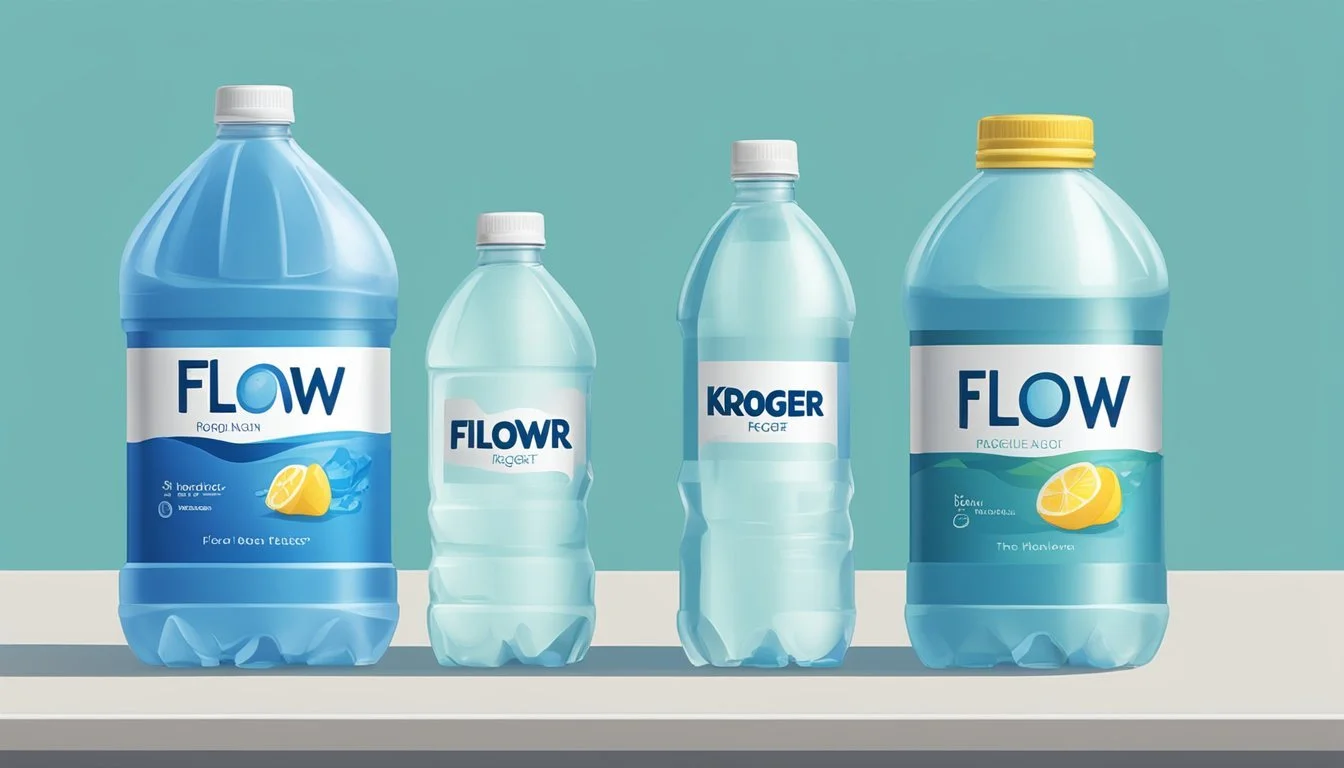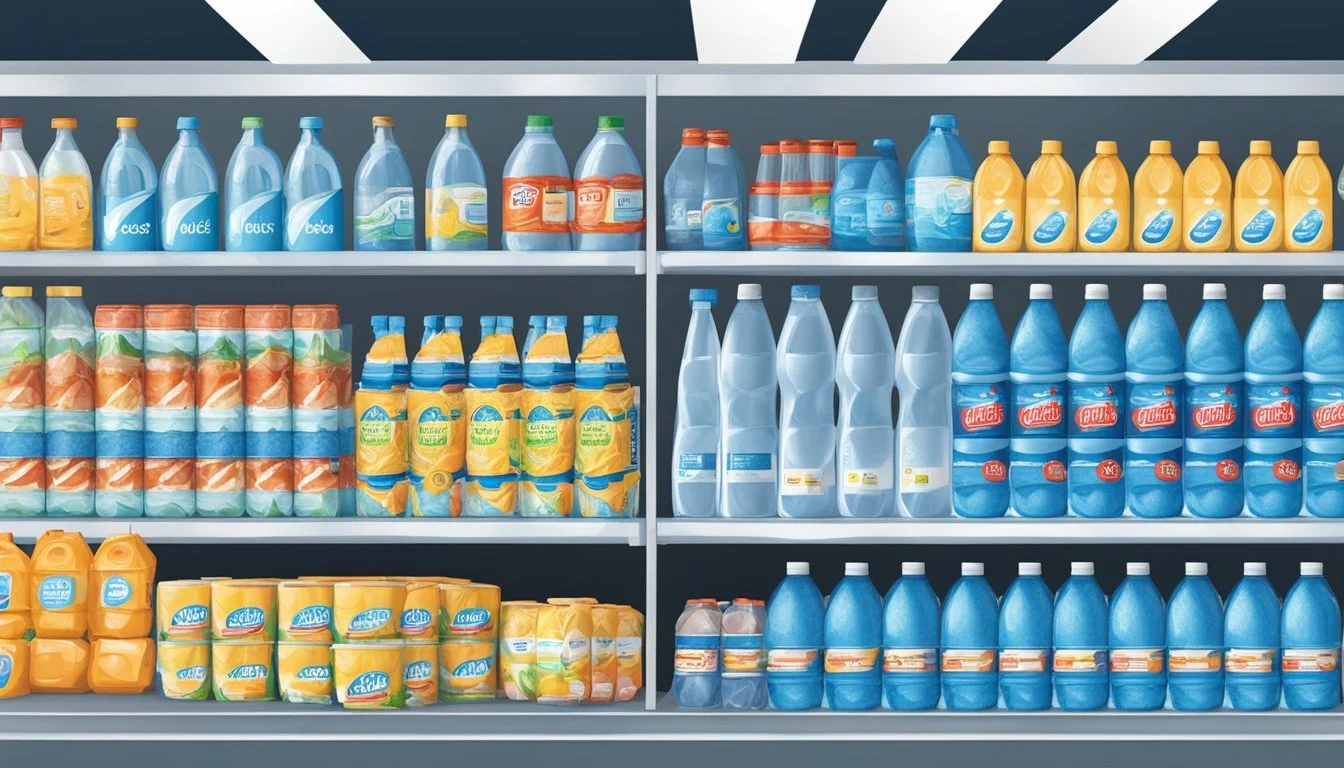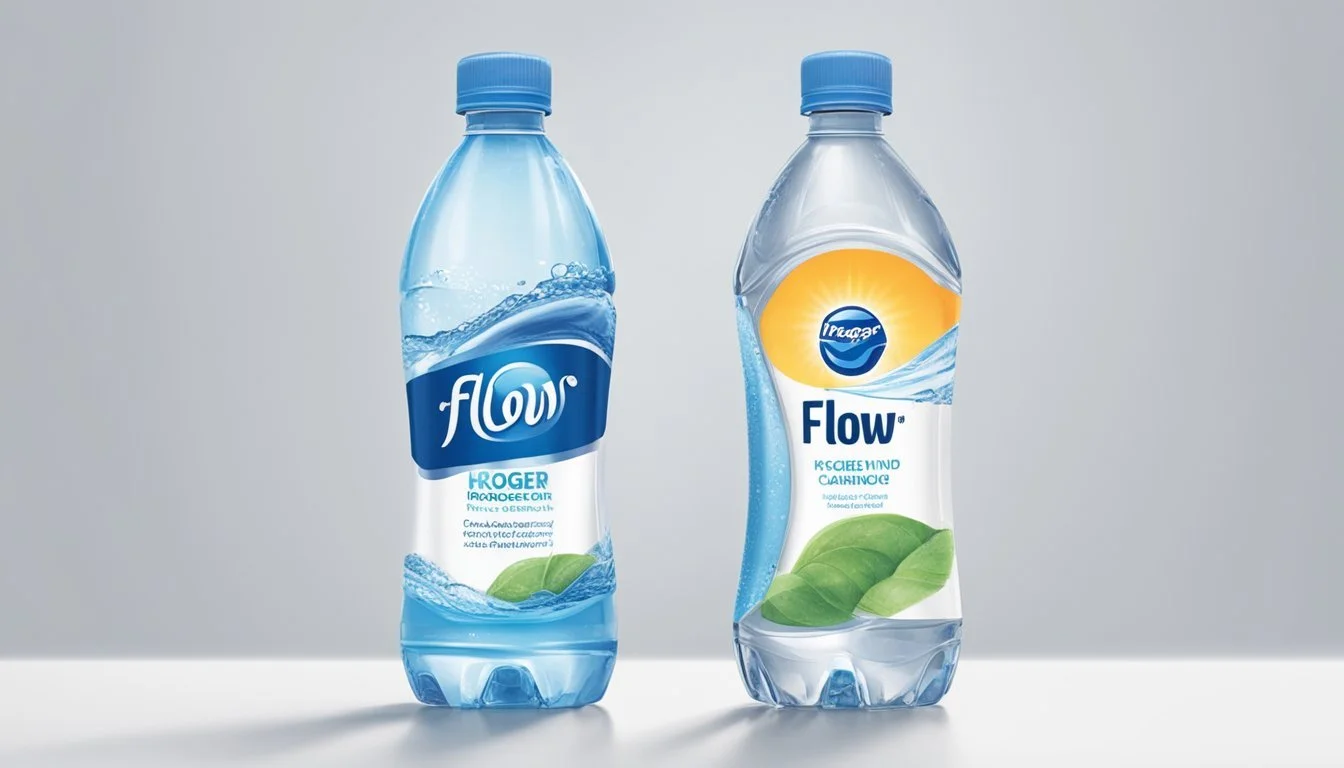Flow vs. Kroger
Which Bottled Water is Better? A Comprehensive Comparison
Choosing the right bottled water can be tricky with so many options available. Flow water is praised for its full taste with a sharp mineral note, making it a distinct choice for those who appreciate a more refined flavor. On the other hand, Kroger bottled water is known for its affordability and adherence to FDA safety standards, making it a reliable choice for budget-conscious consumers.
Flow's packaging often highlights its eco-friendly approach, which can be an appealing factor for environmentally conscious buyers. Kroger, while budget-friendly, raises some concerns over contaminants such as microplastics, despite meeting safety regulations.
Deciding between Flow and Kroger ultimately depends on individual preferences and priorities. Readers interested in taste, sustainability, and health implications will find the comparisons provided in this article invaluable.
Understanding Bottled Water
Bottled water is a popular choice for hydration, praised for its convenience and sometimes for its taste. However, understanding the various types, brand market presence, and regulatory standards is crucial for informed choices, especially when comparing brands like Flow and Kroger.
Defining Bottled Water Types
Bottled water comes in multiple types, each varying slightly by source and treatment. Spring water is derived from underground formations and must flow to the surface naturally.
Mineral water contains naturally occurring dissolved minerals and is often favored for its distinctive taste.
Purified water undergoes processes such as distillation, deionization, or reverse osmosis, removing impurities to meet strict purity criteria.
Tap water is municipal water that may be bottled after treatment to meet safety standards. Each type has its own characteristics, which impact taste, mineral content, and potential contaminants.
Bottled Water Brands and Their Market Presence
The bottled water market is robust, with numerous brands vying for consumer attention. Brands like Kroger offer affordable options that adhere to safety regulations.
Flow waters often highlight features such as natural mineral content and eco-friendly packaging. In recent surveys, brands like Dasani and Aquafina have featured prominently, though preferences can vary widely based on taste and price.
The International Bottled Water Association (IBWA) indicates that brands are enhancing sustainability efforts in response to consumer demand. This competitive landscape influences how companies market their products and prioritize quality and environmental responsibility.
Regulatory Standards: EPA and FDA
Bottled water is subject to stringent regulations to ensure safety and quality. In the United States, the FDA oversees bottled water, ensuring it meets standards for contaminants, labeling, and manufacturing practices.
Populations assume bottled water is safer compared to tap water. However, EPA regulates tap water, applying rigorous criteria to protect public health.
The IBWA provides additional industry oversight, advocating for high standards. It ensures compliance with both FDA and EPA regulations. This dual oversight helps maintain the integrity and safety of bottled water consumed by the public.
Health and Safety Considerations
When choosing between Flow and Kroger bottled water, it's important to consider health and safety factors such as contaminant levels, water treatment methods, and the safety of tap versus bottled water.
Contaminants and Chemicals Analysis
Quality and safety testing is crucial for bottled water. Kroger adheres to FDA regulations, but concerns over microplastics and chemical contaminants remain. Some Kroger bottles are BPA-free, though BPA and other chemicals can still be found in some bottled waters. Consumer Reports highlighted the presence of PFAS chemicals, especially in carbonated waters.
Flow, marketed as naturally alkaline spring water, is less likely to contain synthetic chemicals like BPA. Despite this, all bottled water can have microplastics and other contaminants. Regular testing for heavy metals such as lead and arsenic is essential to ensure safety.
The Role of Water Filters
Water filters play a significant role in ensuring that drinking water is free from contaminants. Filters can remove impurities like heavy metals, chlorine, and other contaminants, improving the water's taste and smell.
Common Types of Water Filters:
Filter Type Contaminants Removed Activated Carbon Chlorine, sediment, volatile organic compounds (VOCs) Reverse Osmosis Lead, pesticides, fluoride, heavy metals UV Filters Bacteria, viruses (disinfection)
Whether someone chooses bottled or tap water, using a water filter can enhance water quality and safety.
Comparing Tap Water and Bottled Water Safety
Tap water in the U.S. is regulated by the Environmental Protection Agency (EPA) under the Safe Drinking Water Act, which mandates regular testing for contaminants. Local water utilities provide annual water quality reports detailing contaminant levels and treatment processes.
Bottled water, regulated by the FDA, may not be tested as frequently as tap water. Although both Flow and Kroger meet safety standards, tap water may provide more comprehensive contaminant data. Flow water’s source and treatment processes should also be considered. Bottled water can offer convenience, but proper storage is necessary to maintain its safety.
By understanding the potential contaminants, the benefits of water filters, and the regulatory differences between tap and bottled water, consumers can make an informed decision on whether Flow or Kroger bottled water better meets their health and safety needs.
Taste and Quality Perceptions
Flow and Kroger bottled waters exhibit distinct differences in taste and quality perceptions. These differences are influenced by factors like mineral content, pH levels, and consumer preferences.
Mineral Content and Taste Profiles
Flow is known for its natural alkaline properties, boasting a pH level of around 8.1. This higher pH level can impart a smoother, slightly sweeter taste to the water. The minerals in Flow, sourced from Canadian springs, contribute to its distinctive profile.
Kroger's bottled water is typically sourced from municipal supplies and then purified. The taste can be more neutral, lacking the mineral complexity found in Flow. The absence of specific mineral profiles might make it less appealing to those who prefer a more pronounced taste.
Consumer Preferences and Perception
Consumers often recognize Flow for its packaging and sustainability efforts, which may enhance perceptions of quality beyond just taste. The naturally alkaline property is a key selling point for health-conscious buyers. The distinct taste due to the mineral content is also favored by many.
Kroger, while meeting safety and quality standards, sometimes faces criticism for being just glorified tap water. Despite this, it appeals to a broad audience due to affordability and accessibility. Its neutral taste makes it a versatile choice for many consumers, though it may lack the unique appeal found in Flow.
Cost and Accessibility
In this comparison of Flow and Kroger bottled water, the focus is on understanding the cost differences and the ease of accessibility for consumers. The value offered by each brand, their market presence, and the economic implications for the average consumer are key areas of interest.
Price Comparison Between Brands
The prices of bottled water vary greatly depending on the brand and the store. Flow is often marketed as a premium product with prices typically higher than standard brands such as Kroger. On average, a liter of Flow water may cost around $2.00 to $2.50, while Kroger’s bottled water is more affordable, often priced below $1.00 per liter.
Pure Life, Dasani, and Aquafina also offer competitive pricing, with costs generally similar to Kroger. Core Hydration and Voss, like Flow, are on the higher end, reflecting their premium branding. Nestlé falls somewhere in the middle, providing a balance between cost and quality.
Understanding the Economic Impact
Selecting bottled water impacts consumers economically, particularly those purchasing large quantities. Opting for higher-priced brands like Flow or Voss can significantly increase household expenses over time. For example, a family purchasing ten liters per week can expect to spend considerably more on Flow than on Kroger water.
Budget-conscious consumers may find Kroger and similar brands like Dasani and Pure Life to be more financially viable options. These brands offer a cost-effective solution without compromising basic hydration needs, making them suitable for everyday consumption.
Accessibility and Convenience for Consumers
Kroger bottled water benefits from the brand's extensive presence in grocery stores across the United States. Consumers can easily find Kroger water in Kroger-owned stores and online, making it a convenient choice. Flow, while available in many locations, is less ubiquitous in grocery stores and may be harder to find.
Other brands like Nestlé and Aquafina are widely distributed and accessible in most grocery stores. Premium brands such as Voss and Core Hydration, although available, may require seeking out specialty stores or specific sections within larger retailers. This can add an element of inconvenience for consumers looking for these products.
In terms of consumer convenience, brands like Kroger, Pure Life, and Dasani stand out due to their widespread availability and competitive pricing.
Environmental Implications
Both Flow and Kroger bottled waters present significant environmental concerns, particularly related to plastic pollution and production impacts. Understanding these concerns can guide consumers towards more sustainable choices.
Plastic Bottles and Microplastics
Plastic bottles, widely used by both Flow and Kroger, contribute significantly to pollution. Single-use bottles often end up in landfills or oceans, breaking down into microplastics.
Microplastics are detrimental to marine life, entering food chains and potentially impacting human health.
Kroger's bottles are mostly BPA-free, but this does not eliminate environmental risks.
Environmental Impact of Bottled Water Production
The production of bottled water consumes considerable resources.
For example, producing bottled water for the entire population of a city like Barcelona could cost around $83.9 million in resources and lead to a loss of 1.43 species per year.
This includes energy for production, transport, and disposal processes, each generating substantial carbon footprints.
Promoting Environmentally Friendly Alternatives
Encouraging the use of alternatives such as filtered tap water can significantly reduce environmental footprints.
Consumers can consider reusable bottles made of materials like stainless steel or glass.
Additionally, various companies now offer water delivery services in sustainable packaging.
These steps can diminish reliance on single-use plastic bottles, offering a scalable solution to the pollution issue.
Flow vs. Kroger Bottled Water Comparison
This section examines the differences between Flow and Kroger bottled water, focusing on their origins, treatment methods, taste, mineral content, prices, value for money, brand reputation, and consumer trust.
Origin and Source Evaluation
Flow sources its water from natural springs, often found in Canada. These sources provide naturally alkaline water, a selling point for health-conscious consumers.
Kroger typically offers spring water and purified water options. The origin of Kroger's spring water is generally specified on the bottle, ensuring transparency.
The source of water can significantly impact the taste and perceived quality. Consumers looking for natural springs often prefer Flow.
Comparison of Treatment Methods
Flow uses minimal processing to maintain its natural alkaline levels. The water undergoes filtration to remove impurities without altering its natural mineral balance. This focus on minimal intervention appeals to those who prefer less processed beverages.
Kroger employs various treatment methods, including reverse osmosis and distillation, depending on the product line. This ensures the water is free from contaminants. Both methods are effective at purifying water, but they also strip away natural minerals, which are often added back afterwards.
Comparison of Taste and Mineral Content
Flow's taste is often described as smooth and slightly alkaline due to its natural mineral content. The presence of minerals like calcium and magnesium contributes to its unique profile.
Kroger's water taste varies by line. The spring water maintains a cleaner profile, while the purified options might be described as neutral. Some reviews note a lack of distinctive taste due to mineral removal during treatment.
The overall taste experience can be subjective, but many find that Flow’s natural minerals provide a more satisfying flavor.
Price and Value for Money
Flow tends to be pricier due to its premium position, natural origins, and environmentally-friendly packaging. A single liter can cost significantly more than Kroger's alternatives.
Kroger offers more budget-friendly options. With prices like $1.29 per gallon, it appeals to cost-conscious consumers.
Both brands cater to different segments: Flow targets those willing to pay for premium quality, while Kroger offers affordable hydration.
Brand Reputation and Consumer Trust
Flow markets itself as environmentally responsible, using tetra pak cartons that are recyclable and often cited for reducing plastic waste. This has earned it a loyal following among eco-conscious consumers.
Kroger, a well-known grocery brand, offers a wide range of products, including bottled water. It has a solid reputation for meeting FDA regulations and providing safe drinking water. Despite environmental concerns over plastic use, many trust Kroger for its consistent quality.
In terms of consumer trust and brand loyalty, both have their strengths and appeal to different audience bases.
Conclusion
When comparing Flow and Kroger bottled water, several factors come to light.
Taste and Quality: Flow is known for its natural alkaline spring water with a pH of 8.1, providing a smooth and refreshing taste. Kroger, adhering to FDA regulations, offers safe and quality bottled water but lacks the natural, mineral-rich profile of Flow.
Health Considerations: Flow prides itself on being eco-friendly with BPA-free packaging. Kroger, while generally safe, faces concerns over microplastics and BPA in some bottles, despite making strides towards BPA-free options.
Environmental Impact: Flow's packaging is notable for its renewable materials. Kroger's plastic bottles contribute to environmental waste and pollution, though they do have recycling programs.
Availability and Convenience: Kroger's bottled water is widely available across its many retail locations. Flow, while esteemed for its quality, can be harder to find in stores compared to Kroger.
Price: Kroger is generally more budget-friendly. Flow’s premium price reflects its quality and eco-friendly focus.
Key Differences:
Flow: Alkaline, eco-friendly packaging, premium.
Kroger: FDA-approved, widely available, more affordable.
Bottom Line: For those who prioritize natural alkalinity and sustainable packaging, Flow stands out. For accessibility and affordability, Kroger meets everyday needs. Each serves different priorities, making them suited to differing consumer preferences.
More About Flow
Flow vs Whole Foods Italian Still Mineral water: Which Bottled Water is Better?
Mountain Valley Spring Water vs Flow: Which Bottled Water is Better?




